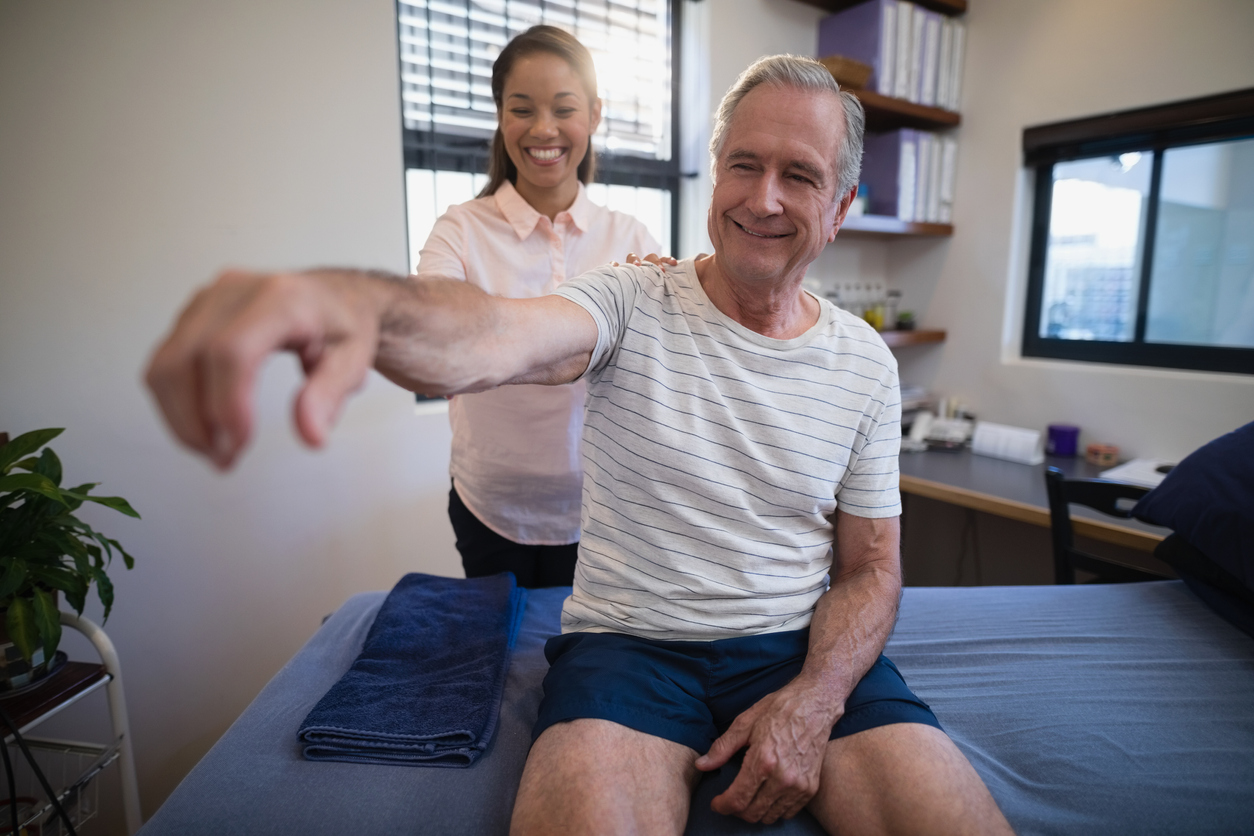
A shoulder joint that has been damaged by arthritis, a fractured shoulder bone, or a severely torn rotator cuff may be restored to its normal function through shoulder replacement surgery. After healing from the surgery, you are likely to be fully free from shoulder pain and will regain your range of motion in your arm.
If you are a candidate for total shoulder replacement surgery, your orthopedic surgeon may recommend either a traditional total shoulder replacement or a reverse shoulder replacement. Let’s talk about what each of these operations entails and where you can go to find relief from your shoulder pain.
Traditional Total Shoulder Replacement Surgery
Traditional shoulder replacement surgery involves replacing the damaged parts of the ball-and-socket shoulder joint with prosthetic materials. Either the humeral head alone (the top of the upper arm bone) or both the humeral head and the glenoid socket are replaced with prostheses. The humeral head is replaced with a metal prosthesis, which is attached to a stem, while the glenoid socket (if applicable) is replaced with a medical-grade plastic prosthesis.
Osteoarthritis and rheumatoid arthritis are the most common reasons for having traditional total shoulder replacement surgery. However, if you have a completely torn rotator cuff, your orthopedic surgeon may recommend a reverse total shoulder replacement.
How Is a Reverse Total Shoulder Replacement Different?
Patients with severe rotator cuff injuries that cannot be fixed may develop a type of arthritis called rotator cuff tear arthropathy, in which movement of the humerus (upper arm bone) causes continual wear-and-tear damage in the shoulder. Rotator cuff problems such as this cause pain, weakness, and a limited range of motion in the shoulder.
To fix this issue, a reverse total shoulder replacement may be recommended. The aim of this procedure is to stabilize the damaged joint, as the problematic rotator cuff can no longer hold the humeral head in the glenoid socket.
The orthopedic surgeon will reverse the orientation of the shoulder’s ball-and-socket joint. The ball at the top of the humerus is removed, and it is replaced with a metal ball – which is actually attached to the shoulder blade rather than to the humerus. A prosthetic socket is attached to the top of the humerus, which is why this is called a reverse shoulder replacement.
Trusted Orthopedic Surgeon in North Dakota
If you have chronic or debilitating shoulder pain, be sure to choose an experienced orthopedist who knows how to quickly and efficiently diagnose the cause of your pain and to give you the solution that would work best for you. Our medical team here at The Bone & Joint Center comprises the largest private orthopedic practice in North Dakota, and we have surgeons who specialize in performing upper extremity surgery. We also provide comprehensive physical therapy and rehabilitation services.
To schedule a consultation with any of our shoulder specialists, contact our friendly staff today by calling us at (800) 424-2663 or by filling out our appointment request form online now. We look forward to seeing you!

